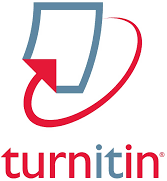Immunostimulation of Nile Tilapia Through the Provision of Synbiotic Feed (Eleutherine bulbosa and Probiotic) to Prevent Motile Aeromonas Septicemia (MAS) Disease
DOI:
https://doi.org/10.29303/jfh.v5i3.7650Keywords:
Nile Tilapia, Synbiotic Feed, Immunostimulation, MAS DiseaseAbstract
Motile Aeromonas Septicemia (MAS) is one of the bacterial diseases that attacks and causes mass death of nile tilapia. Disease control in fish farming using synthetic antibiotics has caused problems in aquaculture, such as bacterial resistance to antibiotics, drug residues in fish, and water pollution. Therefore, alternative measures to control MAS that are safe and environmentally friendly, such as the application of immonostimulant that use organic ingredients, are needed. This research aims to determine potency of immunostimulation of nile tilapia trough feeding of synbiotic feed namely prebiotic Eleutherine bulbosa powder (Ebp) and probiotic containing Lactobacillus casei and Saccharomyces cerevisiae as for prevention MAS disease. The fish were reared for 21 days, in reared for the first 14 days, the fish were given synbiotic feed then for the next 7 days they were given feed without synbiotics. The fish were challenged with Aeromonas hydrophila on day 15th. Experimental design used was completely randomized design with four treatments: 0 g Ebp and 0 ml probiotics in 1 kg of feed (synbiotic free feed), 7.5 g, 10 g, and 12.5 g Ebp each with 15 ml probiotics in 1 kg of feed. The results showed that feeding the fish with synbiotic feed, especially the treatment Ebp12.5, give significantly different results on parameters prevalence, fish recovery, survival rate of the fish test. This research concluded that treatment of Ebp 12.5 was the best dosage of immunostimulant to prevent MAS disease in nile tilapia.Downloads
Published
How to Cite
Issue
Section
License
1. The copyright of this journal belongs to the Editorial Board, based on the author's consent, while the moral rights of the publication belong to the author(s).
2. The formal legal aspect of journal accessibility refers to the same Creative Common Attribution + Noncommercial + ShareAlike (CC BY-NC-SA), implying that publication can be used for non-commercial purposes in its original form.
3. Every publication (printed/electronic) is open access for educational, research and library purposes. In addition to the objectives stated above, the editorial board is not responsible for copyright infringement















